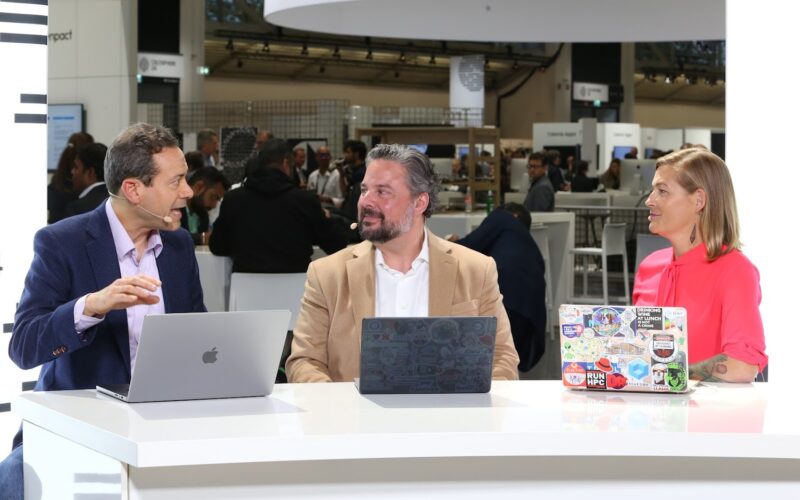Celonis SE is on a mission to create a new level of shared process transparency within and across companies.
On Wednesday, the process mining and intelligence firm unveiled Celonis Networks, where businesses can exchange intelligence relative to their shared processes. The news captured the attention of one SiliconANGLE research analyst who was reminded of something similar nearly 30 years ago.
TheCUBE’s George Gilbert, Rob Strechay and Savannah Peterson talk about process transparency at Celosphere 24.
“This feels like when SAP was taking off in the U.S. in the early 1990s,” said George Gilbert (pictured, left), theCUBE principal research analyst. “The dream was we were going to standardize wall-to-wall on one application so you could see everything that’s going on in the enterprise and we all know that didn’t happen. The Celonis value proposition is that we can build a single source of truth across these islands of automation and data and then create a map of the business as it’s currently running. Then analyze how to transform that into a more ideal state. That is a very high value business proposition.”
Gilbert spoke with theCUBE Research’s Rob Strechay (center) and Savannah Peterson (right) at Celosphere 24, during a discussion of the conference’s opening day announcements in an exclusive broadcast on theCUBE, SiliconANGLE Media’s livestreaming studio. They discussed process transparency and key learnings from the day’s news and interviews on theCUBE. (* Disclosure below.)
Process transparency: Implementing AI agents
Celonis also announced AgentC, a suite of AI agent tools, integrations and partnerships powered by the company’s Process Intelligence platform. The news from Celonis highlighted the growing influence of AI agent technology in enterprise operations.
“There’s silos of AI going on, and silos of data underneath AI, and I think Celonis’ message is about being able to go across that,” Strechay said. “They know the process of what the agent needs to do. For me, that was always missing when we’re having these agent conversations.”
By eliminating silos and creating a map of the business, Celonis is seeking to improve a number of core processes used to run a business. This includes more effective use of the supply chain, according to Peterson.
“In the old days, supply chain was like a game of telephone, one person picks up the phone and says something to the other guy,” Peterson said. “What’s really interesting about Celonis, and what I’m picking up here, is not only are they eliminating that game of telephone, they are harmonizing it like a choir. Everyone participating in that harmony is all speaking the same language, and that is the big difference.”
At the heart of the Celonis platform is the Process Intelligence Graph, the connective tissue that helps users understand how objects and events interact. This will have a democratizing effect on how applications are built, according to Gilbert.
“Let’s say if you want to build an app that works with SAP data, you have to navigate 50,000 tables with three letter German acronyms,” he explained. “Whereas in the process intelligence graph, a citizen developer can take essentially from a visual gallery these elements and build what’s not just a dashboard, but it can have action buttons that then operationalize decisions. It’s a complete change because now app development moves that into the business.”
Here’s the complete video analysis, part of SiliconANGLE’s and theCUBE Research’s coverage of Celosphere 24:
(* Disclosure: TheCUBE is a paid media partner for Celosphere 24. Neither Celonis SE, the sponsor of theCUBE’s event coverage, nor other sponsors have editorial control over content on theCUBE or SiliconANGLE.)
Photo: SiliconANGLE
Your vote of support is important to us and it helps us keep the content FREE.
One click below supports our mission to provide free, deep, and relevant content.
Join our community on YouTube
Join the community that includes more than 15,000 #CubeAlumni experts, including Amazon.com CEO Andy Jassy, Dell Technologies founder and CEO Michael Dell, Intel CEO Pat Gelsinger, and many more luminaries and experts.
THANK YOU
Source link
lol

